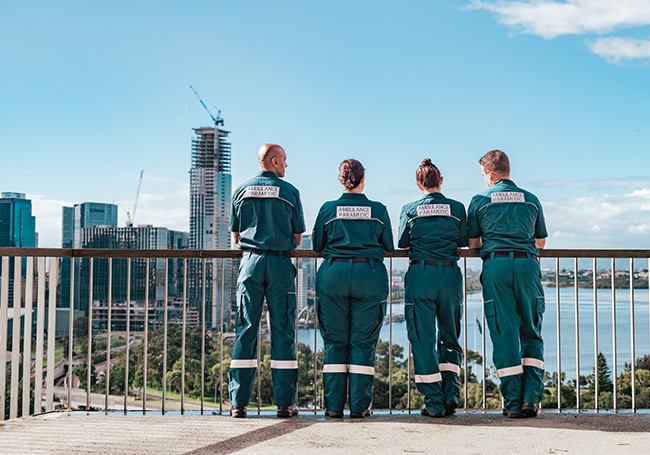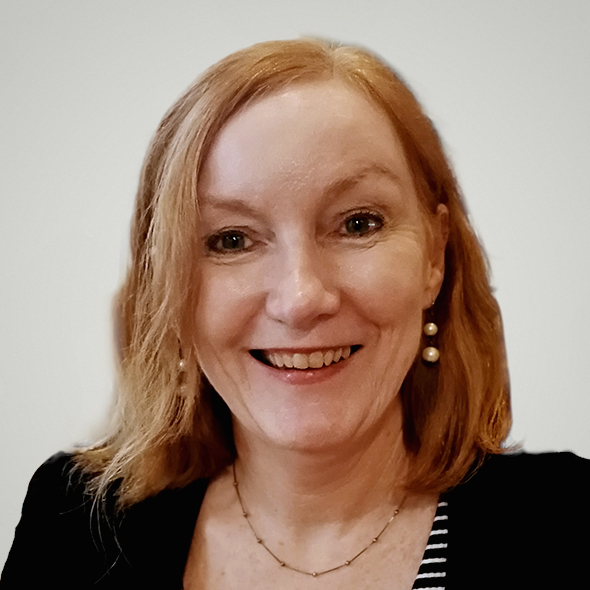Overseeing the biggest St John operation in Australia in WA - the country’s biggest state by land area – is no easy task. Especially when the 131-year-old not-for-profit was in need of change. But together chair Sally Carbon OAM FAICD and new group CEO Kevin Brown GAICD have worked to update governance systems and transform the entity into a modern-day operation that in 2022-23 supported almost 1.2 million people to access education and care.
St John WA ranks in the top five of the 44 St John teams across the world, in terms of size and delivery of operations. Across its 17 service lines it delivers education, technology, health, events, and emergency services.
Last year, the state government signed a five-year deal with St John WA to continue delivering ambulance services with an extension contingent on improving performance by 2025. The deal followed an upper house report to state parliament on ambulance services, and the Minister for Health responded, committing to 48 actions to improve services.
One year later and St John WA has transitioned into a different agency, with a new board, a new chair, a new group CEO and five new subdivision CEOs, plus a new group operating model, strategic plan, governance review, remuneration review and 90-day reporting cycles which replace monthly cycles.
St John WA is an NFP and charity which raises revenue via government and private partnerships, plus customer contributions, and has annual turnover of half a billion dollars. According to its annual report, it delivered an overall surplus of $16.2 million in FY23. Cash reserves of $154.9m will enable investment into capital projects in clinical, property and digital transformation.
Here we interview chair Sally Carbon OAM FAICD, a business strategist with experience honed after her gold-medal Olympic hockey career, about the journey which has transformed the entity. She was appointed chair in October 2022 after serving as deputy chair and has driven drive a culture of high performance for the entire organisation.

Why is St John WA such a big operation?
We have the ambulance contract and it is a big state. It costs a lot of money to supply ambulance services across WA. St John WA delivers 17 different services, whereas most of our eastern state counterparts deliver four or five services and focus mostly on first aid training. Here, we have 7,500 team members, of which 52 per cent are volunteers and 48 per cent employees. We deliberately treat them all the same. So we have a lot of people to look after. Any organisation that has people to look after in these modern-day and post-COVID times knows that social capital is a big item, or a big art. The first thing we had to be able to do around the board table is oversee our leaders’ approach to looking after a big group of people in the modern era.
The board is doing significant work on stakeholder management. Can you elaborate?
We received a governance review, which the board initiated in January this year. It’s taken 10 months to complete. The number one trait that came back was that the way we met with our stakeholders was not conducive to the size and scale of our organisation.
Last year we received a score of four out of 10 for governance, but by October this year, we received eight out of 10. Stakeholder management is one of 10 big ticket items that the board needed to address. It's the number one priority of the board and the group CEO knows this. Through 2024, we’ll use modern-day stakeholder mapping, board immersion plans, and of course, board stakeholder reporting. Even little elements, like a direct board chair email address has enabled open two-way conversation with any member or stakeholder directly with the board.
Your board has changed significantly in the past year. Why?
We lost three board members who were at the end of their tenure and I became chair. We had six board members, including myself, at changeover.
We stopped and thought about what sort of board members we would need to shift the governance into a new generation. We appointed one board member and then two more over a period of four months, which was pretty heavy change for an NFP of this age. The external governance review highlighted the need to recruit professional, experienced, qualified directors. We're going to be growing again, so we needed board members who are dynamic enough to cope with the next phase of growth.
What board performance changes have you made?
We made many changes at the board level. We challenged each other by shifting into distinct reporting board meetings, and distinct organic strategic meetings – not a blurring of the two which typically happens.
We deliberately shifted away from repetitive monthly meetings, to having four 90-day or quarterly “red meetings” where we evaluate the performance of the previous quarter, and hear the priorities of the forthcoming quarter. We also share committee reports, again, with a serious performance and accountability, risk and compliance mindset. Then, in between these quarterly meetings we created mid-quarter or ‘yellow meetings’ with no performance and accountability elements. We describe these meetings as organic meetings.
Secondly, we conducted an external remuneration review for the board, group CEO and top five executives. It was thoroughly and heavily critiqued by the board to ensure remuneration is aligned to the highest level of governance.
Thirdly, we presented a new constitution to our members, which was unanimously passed in October this year and builds stronger governance structures at the board level. These include shorter, performance-based tenures of directors.
Fourthly, the board approved a strongly-defined strategic direction through to 2030 and we are about to approve the strategic plan to meet that direction. This plan has well-articulated deliverables, of which the board can now assess against at the four ‘red meetings’ each year.
And finally, we’ve had much board member movement, requiring a new board composition matrix, to align board capability against modern-day governance needs, plus our new strategic direction. We introduced new, heavily-sweated board committees to fulfil all governance recommendations or to provide specific oversight needs.
What do you see as the main challenges for not for profits and their boards at the moment?
In WA, which is a resource state, the big companies historically attract the big talent. But what has happened in the last four or five years is that NFPs have turned that around. We’ve had a much higher level of interest from people to come and join St John WA because it is such a purposeful organisation with a strong community brand positioning. So, when we advertised for new board members, and the group CEO and chiefs underneath, we got a plethora of the most outstanding individuals come knocking on the door. It’s just sensational.
Demographer Bernard Salt presented to an audience of more than 600 at St John WA’s 2023 exhibition and conference and he talked about how competitive it is in the ‘purposeful’ space at the moment. I very much agree – everyone is jumping ship attempting to work purposefully in such organisations. He reminded us to elevate how purposeful St John WA is, to continually attract future talent.
Any advice on succession planning?
We didn't have a succession policy for the board before, but we approved one this year. I will only serve one three-year term as chair. A new externally-attracted chair will start in November 2025 – thus we are now appointing new directors with chair potential two years out.
Regarding succession for executives…it’s been said that the day you appoint a CEO is the day you start looking for the next one. Kevin Brown our group CEO has done a huge amount of work since he started in January this year. He boldly came from a different industry – aviation - and immersed himself quickly into this new diverse and purposeful company. He even got his St John WA volunteering accreditation before he started his day job as group CEO.
Latest news
Already a member?
Login to view this content


